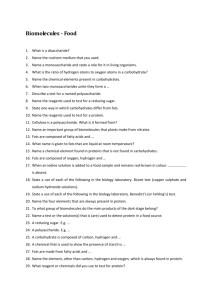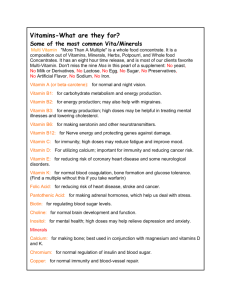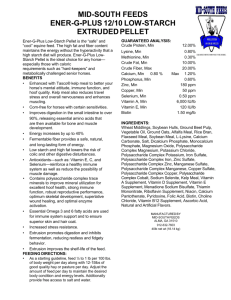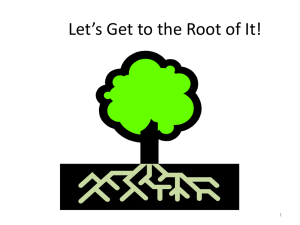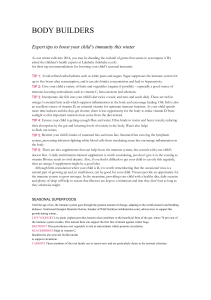Q. Fats are composed of oxygen, hydrogen and
advertisement
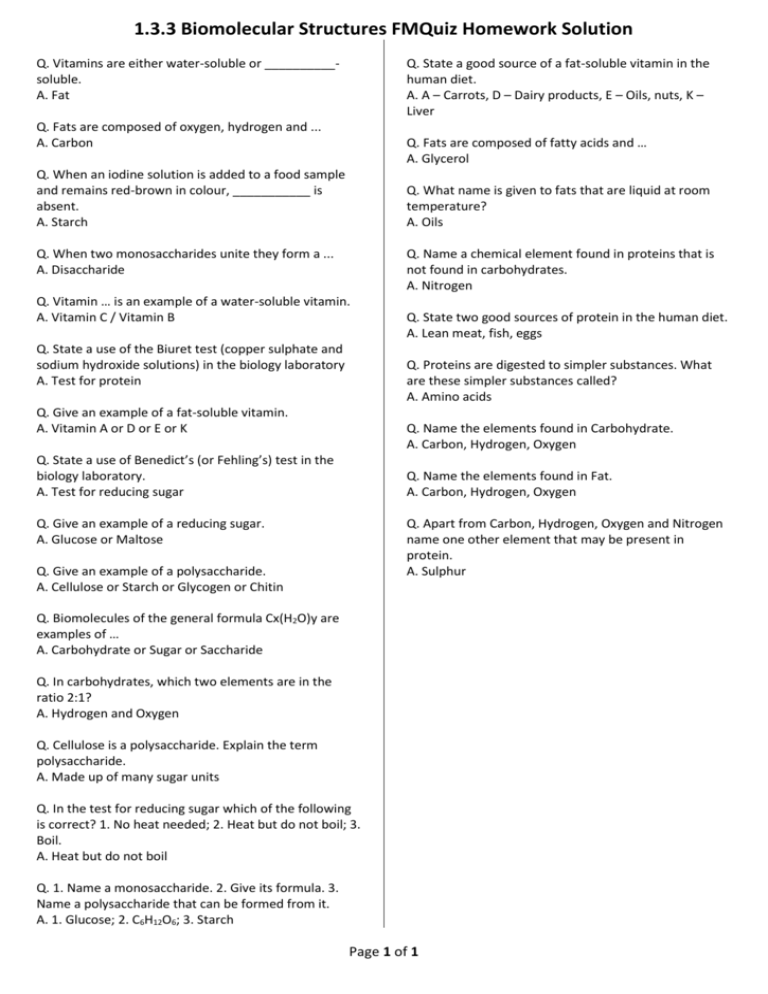
1.3.3 Biomolecular Structures FMQuiz Homework Solution Q. Vitamins are either water-soluble or __________soluble. A. Fat Q. State a good source of a fat-soluble vitamin in the human diet. A. A – Carrots, D – Dairy products, E – Oils, nuts, K – Liver Q. Fats are composed of oxygen, hydrogen and ... A. Carbon Q. Fats are composed of fatty acids and … A. Glycerol Q. When an iodine solution is added to a food sample and remains red-brown in colour, ___________ is absent. A. Starch Q. What name is given to fats that are liquid at room temperature? A. Oils Q. When two monosaccharides unite they form a ... A. Disaccharide Q. Name a chemical element found in proteins that is not found in carbohydrates. A. Nitrogen Q. Vitamin … is an example of a water-soluble vitamin. A. Vitamin C / Vitamin B Q. State a use of the Biuret test (copper sulphate and sodium hydroxide solutions) in the biology laboratory A. Test for protein Q. State two good sources of protein in the human diet. A. Lean meat, fish, eggs Q. Proteins are digested to simpler substances. What are these simpler substances called? A. Amino acids Q. Give an example of a fat-soluble vitamin. A. Vitamin A or D or E or K Q. Name the elements found in Carbohydrate. A. Carbon, Hydrogen, Oxygen Q. State a use of Benedict’s (or Fehling’s) test in the biology laboratory. A. Test for reducing sugar Q. Name the elements found in Fat. A. Carbon, Hydrogen, Oxygen Q. Give an example of a reducing sugar. A. Glucose or Maltose Q. Apart from Carbon, Hydrogen, Oxygen and Nitrogen name one other element that may be present in protein. A. Sulphur Q. Give an example of a polysaccharide. A. Cellulose or Starch or Glycogen or Chitin Q. Biomolecules of the general formula Cx(H2O)y are examples of … A. Carbohydrate or Sugar or Saccharide Q. In carbohydrates, which two elements are in the ratio 2:1? A. Hydrogen and Oxygen Q. Cellulose is a polysaccharide. Explain the term polysaccharide. A. Made up of many sugar units Q. In the test for reducing sugar which of the following is correct? 1. No heat needed; 2. Heat but do not boil; 3. Boil. A. Heat but do not boil Q. 1. Name a monosaccharide. 2. Give its formula. 3. Name a polysaccharide that can be formed from it. A. 1. Glucose; 2. C6H12O6; 3. Starch Page 1 of 1




